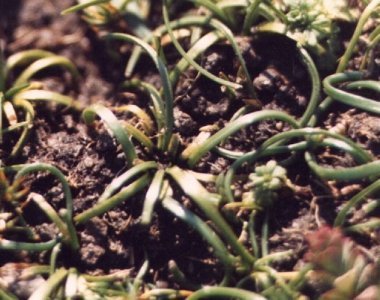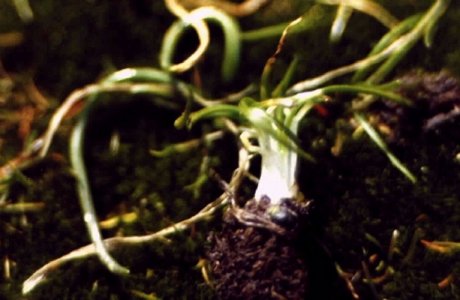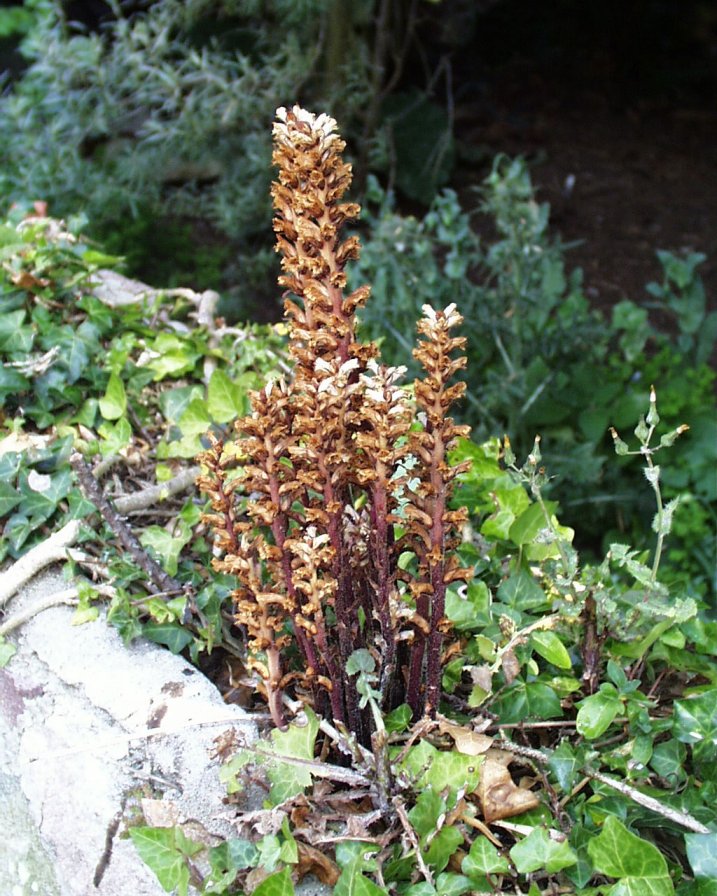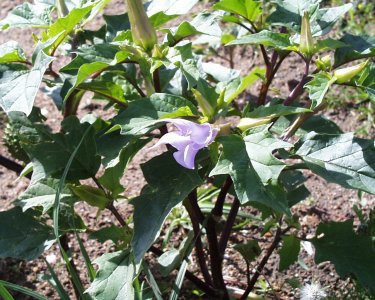
Alderney Nature Diary
December 2001
The Weather
December was drier and sunnier than usual with average temperatures and overall wind speeds, after another cooler, windier, but fairly dry, November.
Figures for comparison with December last year and the 20-year average
| Year | 2001 | 2000 | 20-year average |
| 1982-2001 | |||
| Rain mm. | 30.6 | 142.3 | 98.7 |
| Sun hrs. | 79.0 | 68.2 | 52.1 |
| Max. temp recorded °C | 14.1 | 14.1 | 14.4 |
| Min. temp recorded | 1.6 | 1.6 | 1.7 |
| Mean day temp | 8.4 | 9.1 | 10.4 |
| Mean night temp | 8.0 | 9.2 | 7.0 |
| Total rainfall for year to date, mm. | 798.8 | 883.9 | 723.8 |
| Total sunshine for year to date, hrs. | 1971.0 | 1765.6 | 1799.2 |
Monthly figures for 2001 and Annual Summary

January Rainfall and June Sunshine were the highest recorded since 1955
The Diary for December 2000
Year 2000 finished up with a continuance of what seemed to be months of unusually dull, windy and wet weather and New Year's Eve, ushering in the start of the Second Millennium was accompanied by 50 knot gales and 11mm rain before midnight, with 40 knot winds and another 7.8mm rain on New Year's day. On that day we still fared better than the forecast which was for winds to 90mph in Alderney. My weather station is somewhat protected from winds in the southern half of the compass by the higher bulk of the island to its south and, at this time of year, when the skies are clear near the horizon and the sun is actually shining as it sets, for about 2 weeks either side of the winter solstice (21st December) the sunshine recorder is in the shadow of Tourgis Hill for about half to three-quarters of an hour in the evening. This situation came about on both 21st and 29th. About an inch of snow fell during the evening of 28th but had all gone by morning.
Impressions are one thing, but the reality as shown by both text and tables above was not as bad as it seemed. Winds were fiercer, rainfall 50% higher, temperatures lower and sunshine 50% less in December 1999. All in all we fared far better than the UK and did not suffer anything like the extremes recorded there.
As in November there was little inducement for nature observations, but a few points stood out.
We noted a Little Egret in Braye Bay on the rocks in front of the Arsenal on Christmas Eve and a Blackcap along the road from Whitegates to the Hammond Memorial .
In the first week, a large male Heron who has visited our garden on many occasions over the last few years made several visits gazing longingly into the large fish pond with its protective netting and nylon fishing line strings. On the lawn he stands over 4 feet tall (measured by comparison with nearby plants and a stone pillar). I was greatly surprised early one morning to find him, for the first time ever, in the small open area between the stretched netting layers over the centre of the pond, standing on a large floating clump of White Water Lily, the roots of which had been pulled from the silt on the bottom of the pond in water about three feet deep by the gales pushing on the floating leaves. In landing he had squashed down the upright stems of Spearwort which had grown through the netting and the net was down onto the water surface. I doubt if he had much luck with fishing as the vegetation was making a fairly dense cover over all of the small surface area he could reach which was not covered by the netting.
It was a dry day, so later on I removed the netting, pulled out all the old Spearwort, Parrot's Feathers and Canadian Pondweed to clear a large part of the surface and pushed the clump of Water Lily towards the edge where it would be completely under the netting when this was replaced. The nylon fishing line strings were tightened and the netting replaced all round the pond and over the top of the metal stakes holding the strings, leaving it some two feet above the water surface, as it had been before. I laced the edges of the black nets from each side together with bright yellow polypropylene plant string, the strands criss-crossing the pond about 18inches apart, which I thought would be highly visible to the heron and act as a strong deterrent. Next day was sunny and there were plenty of fish near the surface. I was amazed in the afternoon to see that he was standing IN the pond towards the shallow end with the water up to the top of his legs, in a tiny square between the yellow strings. Herons can take off almost vertically, and go up like a lift and have seen this many times in my own garden, but I had always understood that they could not step down into a pond from the edges because of the way their legs bent. There was nothing solid he could have landed on near him and no other access than straight down from the air, between the strings and the gap where the nets don't quite meet in the middle of the pond. On seeing me he rose rapidly, but his feet caught in the netting or strings and he had to struggle with great flappings of his 6 foot or more wingspan to rise. A few seconds sufficed and he rose about 6 feet above the pond and then flew horizontally through the gap between two trees whose branches overhang the pond.
We haven't seem him since !!! I have now covered the gap completely, with more netting, but the cold weather with little sun has kept the fish down out of sight and I have no idea how many he had managed to catch.
Botanically there was still plenty of Sweet Alison in flower and a few of the yellow daisy family plants, but no sign of the Three-cornered Garlic ("Stinking Onions") in flower yet, despite plenty of leaves everywhere. On the 30th in a sunny spell in the afternoon we noticed the first signs of Winter Heliotrope in flower this year, a patch about 2 x 3m along a grass verge under the shelter of a hedge bottom, in the Chemin du Meunier. This is usually the first patch to flower. Ivy all over the island was now covered with its black berries.
In gardens the Elephant's-ears and Rosemary were still flowering the Elaeagnus flowers had given way to their rugby-ball shaped fruits. The patches of Sweet Violets were now covered in flowers as was the Hedge Veronica.
So ends another year's diaries.
Brief summary of the Diaries for the year 2001
January was the wettest on record here since 1955, with only 1984 coming close. Rainfall was almost twelve times that of last year and more than double the 20-year average. A spell of high pressure from 13-19th brought 6 consecutive dry days, but there had been only 13 days without rain between 13th September and 9th January. As was the case last year, the total eclipse of the moon, this time on 9th, was largely obscured by cloud.
Despite the rain, January was the third sunniest since 1955 with more than 30 hours over the average. Gale force winds from east-north-east, up to 42-44 knots each day, blew from 10-14th, the maximum readings recorded in each 15 minute period averaging 33 knots over the whole of that time. This brought a wind chill factor down to -5ºC most days. Towards the end of the month winds backed round to the north.
Winds continued with a strong cold northerly element for much of the month, the wind chill factor reaching -8.2º on 25th, rainfall was up on both last year and the average. Sunshine was 33 hours less than in 2000, but still above average for February and the year to date.
March continued with above average rainfall with the total rainfall for the 6-month period from 1st October 2000 amounting to 844.05mm (33.3inches), almost double the 20-year average of 447.07mm (17.6inches). The average annual total in Alderney is 730mm or 28.7 inches. It was however only the 5th wettest for this 6-month period, in all our records.
The full moon on 7th April was so bright that the sunshine recorder noted 0.01 hours at 23.13. There was only one day in the month with no sunshine recorded, but the total was still well down on last year and the average. Rainfall was just a little above average.
May by contrast was unusually dry and sunny, with 60% of the month's total of 25.9mm falling on 1st. and 84 hours more sun than last year.
The sunny spell continued through June with no days without some sunshine and 10 days each recording more than 15 hours. The total of 309.1 hours was 78 hours above average and set a new record for the month.
Winds were unusually light in July with a maximum temperature of 27ºC reached on one day in the "mini-heatwave" of the last 10 days of the month, compared with the average maximum for the month of 21.5º, the 6th highest July temperature since 1955. It was also the 6th sunniest since 1955.
Rainfall in August was well above average and eight times that of 2000, whilst sunshine was correspondingly down, 37 hours less than in 2000 and 14 hours below average. Temperatures, wind speed and direction, barometric pressure and humidity were about average although the minimum night temperature recorded of 14.1º was 3ºC above average.
September by contrast had only about one third of the average rainfall and some 20 hours more than the average sunshine. The other parameters were about average.
October turned wet again with twice the usual rainfall and 45 hours less sunshine.
November reversed the rainfall trend with little more than half the average, but was a dull miserable month with only 72 hours sunshine to compare 181 hours last year and the 20-year average of 170 hours. The highest temperature reached was 10º down on last year and 6º below average.
December finished the year somewhat better, with only 30.7mm rain compared with last year's 142.3mm and 98.7mm for the average and 88 hours sunshine compared with 66.2 and 52.6 hours respectively. The annual totals were 75 hours more sun than the average and 180mm of rain above average. There were no temperatures below 0ºC recorded during the year. As noted below the charts, rainfall in January and sunshine in June were both records since 1955.
Botanically there was still plenty of Sweet Alison in flower and a few of the yellow daisy family plants, but no sign of the Three-cornered Garlic ("Stinking Onions") in flower yet, despite plenty of leaves everywhere. Ivy all over the island was now covered with its black berries and several of the fern species were showing spores under their leaves .
In gardens the Elephant's-ears and Rosemary were still flowering the Elaeagnus flowers had given way to their rugby-ball shaped fruits. The patches of Sweet Violets were now covered in flowers as was the Hedge Veronica. Garden Fuschias were still in flower.
Alderney Botanical Report for 2001

2001 has not been a very productive ye ar for new records. with only one new species recorded and a few new sites for existing species. I have recorded the names and number of species which I have noted in flower each month for the last 16 years and there is generally little variation shown. This year was no exception.
April 1st. A walk along the East coast on this sunny afternoon showed our Sand Crocus (Romulea columnae) in full flower by the hundred and a profusion of some other small, or even minute flowers, blooming in the short turf and trodden paths on the St Esquére headland. Here too the rare Myrtle shrub (Myrtus ugni) growing out from under a rock for the last 5 or 6 years, had branched considerably, with a mass of new shoots and three seedlings within about a metre. Not far away along to the east, the endangered species Land Quillwort (Isoetes histrix), (photo above, the next photo, below, shows a half section of the plant), one of our most primitive flowering plants, a member of the Lycopodium group was in profusion in two of its three known colonies along the stretch between here and Fort Quesnard.
In May, three members of the British Lichen Society were in the island for a week updating the 1975 survey of Alderney Lichens. Peter James of the British Museum of Natural History is one of the co-authors of The Lichen

Flora of Great Britain and Ireland (Purvis et al 1992). Ann Allen wrote, and Barbara Hilton illustrated, their 1993, privately published, Field Companion; Flowers of Sark, and all three collaborated in the article Lichens of Sark published in the 1999 Transactions. I spent an interesting day with them surveying the Lichens in the Churchyard, during which they recorded 60+ species, including several species not previously reported from Alderney. Lichens are not always easy to identify positively, and a deal of work is entailed with microscope and with chemical tests, which can only be done in the laboratory, on some species. Their whole visit has added a considerable number of new species to our list and I await their final report with great interest.
Of particular interest are the Lichens Opegrapha subelevata, still at the Longis site where it was first recorded on the Nunnery wall in 1975, one of only three British records for this plant. Fulgensia fulgens on the nearby common and formerly at one other site about a mile away, now appears to be confined to this one site and, with a colony on the dunes of Herm Island makes only two known sites for the plant in all the Channel Islands.
Whilst in the Churchyard I noted that the colony of Kraus's Clubmoss (Selaginella kraussiana), (Picture bottom of page), along the base of the NW wall of the Church, first recorded by Jenny Le Huquet in 1993, has spread considerably in the last two years and now covers much of the 10 x 1m area of soil here.
In June, a new site for Ivy Broomrape (Orobanche hederae), was noted in the new car park at Le Cocq's Stores just off Marais Square. This plant is surprisingly rare in Alderney despite vast amounts of Ivy. June 2005 yielded another record close by, on the wall of the Studio in St. Martins, (Picture below). These are still more or less within the line of the former Marais stream which goes under the Island Hall and down La Vallée, and keeps to the only known sites of this plant in Alderney, which all lie along the line of this stream.
August gave us our only new record for the year; A new species of Angel's Trumpets has appeared, this one appears to be Datura stramonium var. tatula, (Second picture below), about 20 plants were noted in a small area of recently spread soil at the Railway Station. An annual about 30-40 cms high with big green shiny seed pods with many spines and pale blue and white flowers about 10cm long. A few days later Margaret Long, the Jersey botanist, independently identified this as this species, which I had already run down in the RHS Dictionary. The soil came from St. Catherine's House in Victoria Street. The owners are sure they have never seen this plant in their garden in the 20 years or so they have been there. In common with many other Solanaceae, the seed has probably been long dormant in the soil and only germinated after it had been disturbed.
The remainder of the year yielded no new records of any special interest.

Ivy Broomrape
......

Angel's Trumpets

Selaginella kraussiana
Monthly figures for 2004 and 20-year averages 1985-2004
| Year 2004 | Jan | Feb | March | April | May | June | July | Aug | Sept | Oct | Nov | Dec | Total |
| Temp. highest °C | 12.3 | 14.1 | 15.0 | 17.3 | 20.4 | 25.7 | 22.2 | 26.1 | 21.7 | 17.7 | 14.1 | 13.2 | |
| Temp. lowest °C | 3.2 | 0.8 | 1.2 | 5.6 | 8.4 | 10.0 | 11.4 | 14.1 | 9.6 | 7.6 | 6.8 | 2.8 | |
| Average daily Max. | 8.7 | 7.9 | 8.2 | 11.2 | 13.4 | 16.6 | 17.0 | 18.8 | 17.3 | 14.1 | 11.5 | 9.3 | |
| Average daily Min. | 8.7 | 7.3 | 7.1 | 9.1 | 11.6 | 14.9 | 14.7 | 16.6 | 16.3 | 13.4 | 11.2 | 9.0 | |
| Monthly mean °C | 8.7 | 7.5 | 7.9 | 10.1 | 12.8 | 15.9 | 16.4 | 18.1 | 16.3 | 13.8 | 11.4 | 9.2 | |
| Rain mm. | 111.5 | 27.3 | 23.3 | 70.1 | 17.2 | 7.0 | 109.6 | 153.5 | 28.6 | 123.5 | 25.3 | 61.8 | 758.6 |
| Sun hrs. | 59.5 | 93.6 | 134.2 | 208.1 | 298.1 | 311.8 | 228.7 | 230.3 | 181.3 | 101.3 | 48.8 | 34.6 | 1930.3 |
| Barometer highest mb. | 1031 | 1038 | 1037 | 1028 | 1031 | 1035 | 1029 | 1023 | 1030 | 1022 | 1039 | 1034 | |
| Barometer lowest mb. | 986 | 996 | 987 | 974 | 975 | 994 | 993 | 989 | 1009 | 983 | 1007 | 989 | |
| Barometer mean mb. | 1010 | 1022 | 1020 | 1012 | 1017 | 1019 | 1017 | 1011 | 1020 | 1006 | 1023 | 1020 | |
| Humidity max. % | 100 | 100 | 100 | 100 | 100 | 100 | 100 | 100 | 100 | 100 | 100 | 100 | |
| Humidity min. % | 75 | 77 | 77 | 76 | 76 | 78 | 80 | 56 | 72 | 80 | 66 | 69 | |
| Humidity average % | 92.0 | 91.8 | 92.3 | 92.5 | 93.5 | 93.5 | 93.0 | 85.9 | 92.9 | 92.4 | 91.9 | 92.0 | |
| Wind direction mean ° | 227 | 132 | 170 | 176 | 180 | 242 | 225 | 223 | 216 | 210 | 199 | 197 | |
| Wind speed max kts. | 50 | 50 | 46 | 44 | 40 | 46 | 44 | 38 | 40 | 54 | 44 | 72 | |
| Wind speed mean kts. | 15.2 | 12.5 | 11.0 | 8.7 | 6.9 | 7.3 | 7.3 | 8.9 | 11.9 | 14.1 | 10.5 | 11.0 | |
| New rain sensor fitted 1.10.04 | |||||||||||||
| Summary for the 20 years 1985-2004 | Jan | Feb | March | April | May | June | July | Aug | Sept | Oct | Nov | Dec | Total |
| Temp. monthly max | 12.8 | 11.8 | 13.5 | 15.3 | 19.3 | 23.2 | 24.5 | 25.3 | 23.0 | 20.4 | 17.6 | 15.8 | |
| Temp. monthy min | 0.5 | 0.8 | 2.1 | 3.4 | 6.1 | 12.1 | 14.3 | 14.7 | 9.6 | 11.3 | 7.5 | 5.5 | |
| (Max | 9.1 | 8.3 | 9.6 | 11.1 | 13.6 | 15.8 | 17.4 | 18.3 | 16.9 | 14.4 | 11.5 | 9.6 | |
| Average daily (Min | 6.4 | 5.7 | 6.5 | 7.3 | 9.6 | 13.2 | 15.6 | 16.3 | 15.5 | 14.6 | 11.6 | 9.6 | |
| (Mean | 7.7 | 7.0 | 8.1 | 9.2 | 11.7 | 14.2 | 16.1 | 16.8 | 15.9 | 13.9 | 10.9 | 9.1 | |
| Rain mm. | 81.9 | 52.3 | 49.5 | 51.6 | 32.8 | 39.8 | 38.8 | 44.3 | 46.0 | 86.7 | 76.2 | 88.9 | 688.9 |
| Sun hrs. | 61.0 | 77.1 | 122.7 | 174.0 | 238.8 | 225.1 | 230.7 | 220.4 | 170.1 | 102.3 | 71.8 | 48.9 | 1743.0 |
.
.